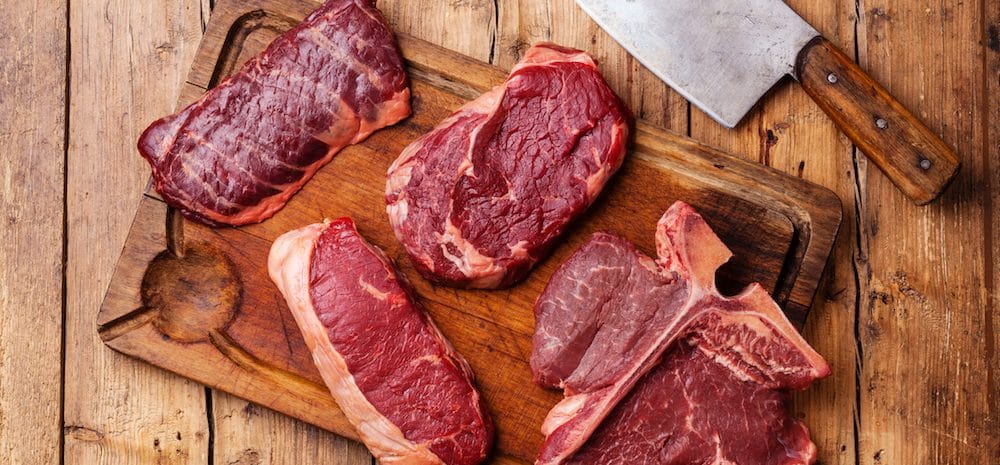23 Apr 2018
Celebrate Steak this Great British Beef Week
British Beef Week 2018 is upon us, and what better way to celebrate than with a steak. From fancy fillet and reliable rump to the lesser known onglet and the humongous tomahawk, which steak cut should you choose? Take a look at the Etherington’s Steak Manual below:
- Fillet is the most expensive steak per kg, due to its intrinsic tenderness. This means it can be cooked very rare and still be easy to eat and its subtle flavour can benefit from a tasty sauce.
- Rib Eye a juicy, richly flavoured cut with generous marbling and a firm texture, the wide ribbon of fat at the core melts during cooking and makes it extra succulent – this is a big favourite here at Etherington’s.
- Cote De Beouf issimply a rib-eye steak on the bone and will serve 2 people easily – perfect for Valentine’s menus. Sometimes you see this steak with a longer piece of rib bone called a Tomahawk Steak, as it resembles a single-handed axe.
- Rump is a versatile, relatively lean steak, suitable for frying and grilling.
- Easily recognised by the shape, a T Bone steak has the flesh of the sirloin on one side, and the tender fillet on the other. These are relatively large steaks, weighing roughly 12-16oz – a great feast!
- Onglet Steaks (also known as hanger steaks) are taken from near the kidneys leaving them with a rich, almost offal like taste.
- Bavette Steak is a sheet of meat is taken from the belly of the carcass. A textured piece of meat it can be flash fried or casseroled. If you opt for the fast fry method be sure to slice the meat across the grain into fairly thin, tasty ribbons.
- Featherblade steaks are cut straight through from the animal’s shoulder muscle, leaving them with a line of gristle in the middle, so it looks like a feather. When cut flat off the gristle it is known as a Flat Iron Steak.
- Chuck Steak is a tasty and economical cut from the top of the rib where it meets the shoulder and is best suited to slower methods of cooking – and is great diced in stews.
- Minute Steaks can be cut from a variety of muscles but is often from the thick flank or top rump. It is cut thinly (about 1cm thick) and so cooks quickly.


